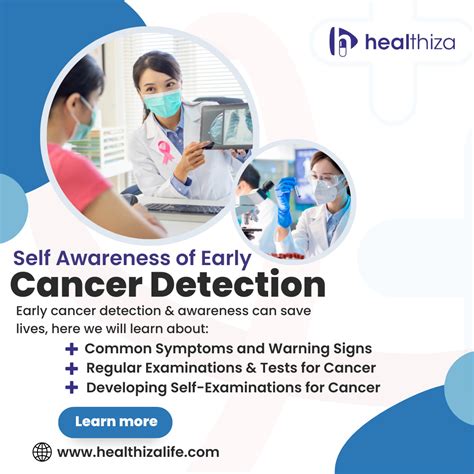Intro
Preventing stroke is crucial for maintaining a healthy brain and overall well-being. A stroke occurs when the blood supply to the brain is interrupted, either due to a blockage or a rupture of blood vessels, leading to damage or death of brain cells. This can result in significant disabilities, including loss of speech, vision, and mobility, as well as cognitive impairments. The importance of stroke prevention cannot be overstated, as it is a leading cause of death and disability worldwide. By understanding the risk factors and taking proactive steps, individuals can significantly reduce their likelihood of experiencing a stroke.
Stroke prevention is a multifaceted approach that involves lifestyle modifications, medical interventions, and awareness of the warning signs. It is essential to recognize that stroke can affect anyone, regardless of age, gender, or background. However, certain factors, such as hypertension, diabetes, high cholesterol, and smoking, increase the risk of stroke. By managing these conditions and adopting a healthy lifestyle, individuals can lower their risk and protect their brain health. Moreover, being aware of the signs of stroke, such as sudden weakness, numbness, or paralysis of the face, arm, or leg, can facilitate prompt medical attention and minimize damage.
The consequences of stroke can be devastating, affecting not only the individual but also their loved ones. The emotional, financial, and social burdens of stroke can be overwhelming, making prevention even more critical. Fortunately, many strokes can be prevented by addressing modifiable risk factors and adopting a proactive approach to health. By making informed choices and taking control of their health, individuals can reduce their risk of stroke and maintain their quality of life. This article will delve into the aspects of stroke prevention, providing insights into the benefits, working mechanisms, and practical steps that can be taken to minimize the risk of stroke.
Understanding Stroke Risk Factors

Understanding the risk factors for stroke is essential for prevention. These factors can be broadly categorized into modifiable and non-modifiable risk factors. Modifiable risk factors include hypertension, diabetes, high cholesterol, smoking, obesity, physical inactivity, and unhealthy diet. Non-modifiable risk factors, on the other hand, include age, family history, and ethnicity. By focusing on the modifiable risk factors, individuals can significantly reduce their risk of stroke. For instance, managing blood pressure through lifestyle changes and medication can lower the risk of stroke. Similarly, quitting smoking, exercising regularly, and maintaining a healthy weight can also contribute to stroke prevention.
Modifiable Risk Factors
Modifiable risk factors are conditions or behaviors that can be changed to reduce the risk of stroke. These include: - Hypertension: High blood pressure is a significant risk factor for stroke, as it can cause blood vessels to narrow and weaken, making them more susceptible to blockage or rupture. - Diabetes: Diabetes can damage blood vessels and nerves, increasing the risk of stroke. - High Cholesterol: High levels of low-density lipoprotein (LDL) cholesterol can lead to the buildup of plaque in blood vessels, increasing the risk of blockage. - Smoking: Smoking damages blood vessels, increases blood pressure, and reduces blood flow to the brain, all of which can increase the risk of stroke. - Obesity: Excess weight can increase blood pressure, diabetes risk, and cholesterol levels, all of which are risk factors for stroke. - Physical Inactivity: Lack of physical activity can contribute to obesity, high blood pressure, and diabetes, increasing the risk of stroke. - Unhealthy Diet: A diet high in salt, sugar, and saturated fats can increase blood pressure, cholesterol levels, and the risk of stroke.Lifestyle Modifications for Stroke Prevention

Lifestyle modifications play a crucial role in stroke prevention. By adopting healthy habits, individuals can significantly reduce their risk of stroke. The following lifestyle modifications are recommended:
- Regular Physical Activity: Engaging in at least 150 minutes of moderate-intensity aerobic exercise or 75 minutes of vigorous-intensity aerobic exercise per week can help lower blood pressure, improve cholesterol levels, and reduce the risk of stroke.
- Healthy Diet: Consuming a diet rich in fruits, vegetables, whole grains, and lean proteins can help manage blood pressure, cholesterol levels, and blood sugar levels, reducing the risk of stroke.
- Weight Management: Maintaining a healthy weight through a combination of diet and exercise can reduce the risk of stroke.
- Smoking Cessation: Quitting smoking can significantly reduce the risk of stroke, as well as other cardiovascular diseases.
- Stress Management: Engaging in stress-reducing activities, such as meditation or yoga, can help manage blood pressure and reduce the risk of stroke.
Medical Interventions for Stroke Prevention
Medical interventions can also play a crucial role in stroke prevention, particularly for individuals with high-risk conditions such as atrial fibrillation, carotid artery disease, or previous stroke or transient ischemic attack (TIA). These interventions may include: - Medications: Blood thinners, such as warfarin, aspirin, or clopidogrel, can help prevent blood clots from forming and reduce the risk of stroke. - Surgery: Carotid endarterectomy or angioplasty and stenting can help remove plaque buildup or widen narrowed carotid arteries, reducing the risk of stroke. - Device Implantation: Implantable devices, such as pacemakers or implantable cardioverter-defibrillators (ICDs), can help regulate heart rhythm and reduce the risk of stroke.Awareness and Early Detection

Awareness and early detection are critical for stroke prevention and treatment. Recognizing the warning signs of stroke, such as sudden weakness, numbness, or paralysis of the face, arm, or leg, can facilitate prompt medical attention and minimize damage. The American Stroke Association's "FAST" acronym can help individuals remember the warning signs:
- Face: Ask the person to smile. Does one side of their face droop?
- Arm: Ask the person to raise both arms. Does one arm drift downward?
- Speech: Ask the person to repeat a simple sentence. Is their speech slurred or difficult to understand?
- Time: Time is of the essence. If the person shows any of these symptoms, call for emergency medical services immediately.
Community-Based Initiatives for Stroke Prevention
Community-based initiatives can also play a vital role in stroke prevention. These initiatives may include: - Public Education Campaigns: Raising awareness about stroke risk factors, warning signs, and prevention strategies can encourage individuals to adopt healthy lifestyles and seek medical attention promptly. - Community-Based Programs: Implementing community-based programs, such as blood pressure monitoring, exercise classes, and nutrition counseling, can help individuals manage their risk factors and reduce their risk of stroke. - Support Groups: Providing support groups for individuals who have experienced stroke or are at high risk can help them cope with the emotional and social challenges of stroke and encourage them to adopt healthy lifestyles.Future Directions in Stroke Prevention

Future directions in stroke prevention may include the development of new medications, devices, and technologies to help manage risk factors and prevent stroke. Additionally, advancements in genetic research and personalized medicine may enable healthcare providers to tailor prevention strategies to an individual's unique genetic profile. Furthermore, the increasing use of artificial intelligence and machine learning may help identify high-risk individuals and predict stroke events, facilitating early intervention and prevention.
Challenges and Opportunities in Stroke Prevention
Despite the progress made in stroke prevention, several challenges remain. These challenges include: - Limited Access to Healthcare: In some communities, limited access to healthcare services and specialists can hinder stroke prevention and treatment efforts. - Health Disparities: Racial and ethnic disparities in stroke risk and outcomes persist, highlighting the need for targeted interventions and community-based initiatives. - Lack of Awareness: Limited awareness about stroke risk factors, warning signs, and prevention strategies can hinder early detection and treatment.However, these challenges also present opportunities for innovation and improvement. By addressing these challenges and leveraging advancements in technology, genetics, and personalized medicine, healthcare providers and researchers can develop more effective stroke prevention strategies and improve outcomes for individuals at risk.
What are the most common risk factors for stroke?
+The most common risk factors for stroke include hypertension, diabetes, high cholesterol, smoking, obesity, physical inactivity, and unhealthy diet.
How can I reduce my risk of stroke?
+You can reduce your risk of stroke by adopting healthy lifestyle habits, such as regular physical activity, a healthy diet, weight management, smoking cessation, and stress management. Additionally, managing underlying medical conditions, such as hypertension, diabetes, and high cholesterol, can also help reduce your risk.
What are the warning signs of stroke?
+The warning signs of stroke include sudden weakness, numbness, or paralysis of the face, arm, or leg, as well as difficulty speaking or understanding speech, sudden blurred vision or loss of vision, and sudden severe headache. If you or someone you know experiences any of these symptoms, call for emergency medical services immediately.
In conclusion, preventing stroke requires a comprehensive approach that involves lifestyle modifications, medical interventions, and awareness of the warning signs. By understanding the risk factors and taking proactive steps, individuals can significantly reduce their likelihood of experiencing a stroke. We invite readers to share their experiences, ask questions, and engage in discussions about stroke prevention. Together, we can work towards reducing the burden of stroke and promoting brain health for all.
